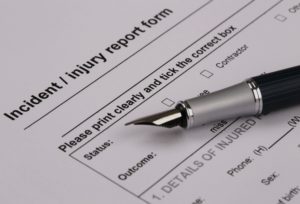Reporting Injuries and Illness

Safety Talk
Every workplace is a little different, but one thing they all have in common is the need and desire to keep workers as safe and free from injury or illness as possible. To do this, employers have mandatory reporting requirements to keep track of all injuries and illnesses. Some of this reporting is required by government safety agencies and some is simply good business practice. Employers know that a safe and healthy workforce is a productive and happy workforce.
To stay safe and healthy on the job you should be aware of some basic requirements about injury and illness reporting at your facility. Reporting injuries or illnesses is in your best interest, and the best interest of your co-workers. Your experience may help change a job procedure or task and thus help prevent someone else from being injured or getting ill on the job.
To keep track of workplace injuries and illnesses, there are reporting mechanisms and written reports to file. If you get hurt or ill on the job, the first step is to report it to your supervisor. Often, they’ll help you fill out the forms. Some facilities use their own forms; others use government forms. Whichever form is used, it’s important to include all of the basic information required, including your name, where the injury took place, and a description of the circumstances surrounding the incident.
The next step in the reporting process is for you to be seen by a physician or other qualified healthcare practitioner right away. Whether the injury is a major one requiring stitches or a minor one that needs only a bandage, it’s important for you to visit the employee health office or occupational health nurse as soon as possible.
It’s also important to report so-called “near misses.” Near misses are those events where you recognize that you might have been injured, or where you see that you could have been exposed to an infectious disease or infectious material. Reporting near misses lets your employer build a database to make the workplace safer.
Reporting injuries or illnesses is not a way of tracking you or your activities at work. It’s not a way of punishing you for becoming injured or sick at work. It’s a way for you to help your employer create a safer workplace for you and your co-workers.